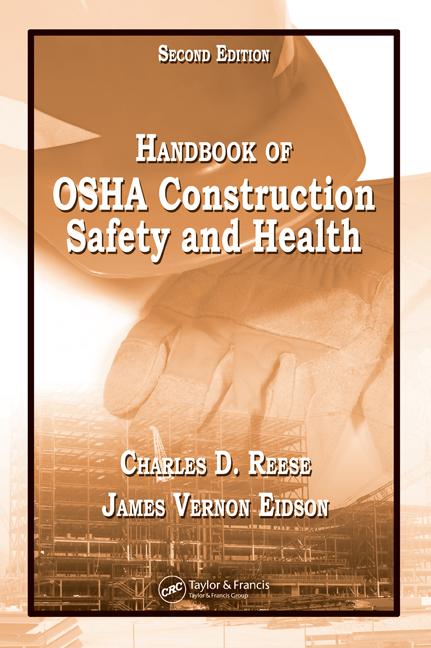OSHA compliance questions?
Resolve with a letter of interpretation

Intent
OSHA’s regulatory intent is found in the preamble to new/revised standards. For example, the preamble to OSHA’s revised March 26, 2012, HCS, “… provides a synopsis of the events leading up to the establishment of the final standard, a detailed description of OSHA’s rationale for the necessity of the modification, and final economic and voluntary flexibility analysis that support the Agency’s determinations.” Intent is the whole of the information within the preamble; particularly discussions regarding a stakeholder’s views and concerns.
Letter of law
The letter of the law is the actual words codified within a final standard. For example, the HCS at 29 CFR 1910.1200(g)(11) states, “Safety data sheets shall also be made readily available, upon request, to designated representatives, the Assistant Secretary, and the Director, in accordance with the requirements of 1910.1020(e)” i.e. employee access to medical and exposure records.
The above example shows that individual words may require clarification. For example, how soon is “readily” available? Does “available” mean looking at the SDS or must a hard copy be provided? Must “request” be in writing or will verbal suffice? Who qualifies as a “designated” representative?
Interpretations
OSHA’s Directorate of Enforcement Programs (DEP) often establishes directives to provide guidance to compliance officers (and available for public review) on how an OSHA standard will be enforced. OSHA’s DEP will also provide letters of interpretation upon request to interested parties, such as EHS pros.
Letters of interpretation are needed when questions arise that have not been answered within the preamble to a standard, within OSHA directives, or available officially elsewhere. Officially is important. EHS pros may have opinions on questions but when enforcement comes into play, OSHA standard interpretations and other official sources including judicial decisions are what matters most.
Request for interpretation
How should you frame questions for OSHA standard interpretation? It is easiest for OSHA to respond, and easier for stakeholders to search for interpretations afterward, when questions are numbered, brief and to the point, and refer to the specific section of a standard in question.
The following is an example of a letter of interpretation to OSHA’s DEP. Questions are real and are from my read of how new/revised standards within the HCS may impact compliance with standards within OSHA’s lab standard. I don’t plan to send in the request for interpretation. If you feel the need, use/revise the information below and send the request to OSHA under your name.
Directorate of Enforcement Programs
U.S. Dept. of Labor, OSHA
200 Constitution Avenue, NW, RM N-3119
Washington, DC 20210
RE: Request for Interpretation - Mutagen
Dear sir/madam:
Question #1: OSHA’s lab standard revised March 26, 2012, provides separate definitions for “mutagen” and “reproductive toxins.” Under the former lab standard, mutagen was considered a subset under reproductive toxin e.g. may cause genetic defects. Are mutagens excluded as a “particularly hazardous substance” identified as “select carcinogens, reproductive toxins and substances which have a high degree of acute toxicity” at 1910.1450(e)(3)(vii)?
Question #2: If mutagen is a particularly hazardous substance under the lab standard, do the provisions at 1910.1450(e)(3)(viii)(A) thru 1910.1450(e)(3)(viii)(D) satisfy the precautionary/prevention statement “obtain special instructions before use” for germ cell mutagenicity under OSHA’s hazard communication standard revised March 26, 2012, at 1910.1200 Appendix C.4.8?
Thank you for your assistance in this matter.
How will OSHA respond?
For question #1, I suspect that OSHA’s DEP will review discussions for “Germ Cell Mutagenicity” within the preamble to the HCS at FR 77 No. 58 March 26, 2012, page 17718. From there, DEP will most likely conclude that the intent of the revisions to the HCS was not to render any other OSHA standard “less protective.” Therefore, OSHA will probably interpret that for purposes of 1910.1450(e)(3)(viii) germ cell mutagenicity is considered a particularly hazardous substance — even though this is not how the letter of the law within the lab standard now reads.
Official interpretation
What if I am wrong with my opinion? EHS pros render opinions all the time — especially with the free flow of information today. But these opinions usually come with disclaimers or wiggle-room words such as, “I suspect,” “most likely” and “probably.”
If your objective is strict compliance with a standard, then conformance to an opinion may carry little weight when a local area OSHA office makes a decision on compliance enforcement. This is why a letter of interpretation from OSHA’s DEP is needed when there is uncertainty of how to comply.
Start process early
It may take a few months to get a letter of interpretation from OSHA’s DEP. If your organization is faced with a citation for non-compliance from a local area office, don’t expect a letter of interpretation from OSHA’s DEP to arrive before the date for an informal hearing.
Where do you find letters of interpretation? At the top OSHA’s home page insert the term <standard interpretations> at the search box to link to letters of interpretations by either publication date or standard #.
With all the possible complexity of OSHA standards, the number of standard interpretations is not overwhelming. For example, OSHA’s lab standard is more than 20 years old and there are only about 25 letters of interpretation for the standard. Broader standards, such the HCS, will have considerably more letters of interpretation, however.
Requests for letters of interpretation mostly occur during first year following release of a new/revised standard and trickle in thereafter. Previous letters of interpretation may no longer be valid after OSHA revises a standard. With this in mind, you should be alert now to new letters of interpretation for OSHA’s revised HCS and the standards it revises such as the lab standard.
Take initiative
If you didn’t participate on the front end of OSHA standard development by providing comments and questions to influence the preamble, then participation on the back end through letters of interpretation is another opportunity for you to contribute.
Initiative follows the path of 4C (foresee) risk communication: curiosity, concern, controversy and conflict. Be curious when you read a standard. Identify concerns that may lead to controversy. Resolve controversy through letters of interpretation. Finally, a letter of interpretation will help avoid conflict with OSHA regarding strict compliance.
Looking for a reprint of this article?
From high-res PDFs to custom plaques, order your copy today!









